- Home
- Joel C. Rosenberg
The Copper Scroll
The Copper Scroll Read online
Table of Contents
Special Copyright Notice
Cast of Characters
AUTHOR’S NOTE
PREFACE
1
2
3
4
5
6
7
8
9
10
11
12
13
14
15
16
17
18
19
20
21
22
23
24
25
26
27
28
29
30
31
32
33
34
35
36
37
38
39
40
41
42
43
44
45
46
47
48
49
50
51
52
53
54
55
56
57
58
59
60
61
62
63
64
65
66
67
68
69
70
71
EPILOGUE
IS IT TRUE?
ACKNOWLEDGMENTS
Joel C. Rosenberg
* * *
The Copper Scroll
by
Joel C. Rosenberg
* * *
Tyndale House Publishers, Inc.
Carol Stream, Illinois
To Caleb, Jacob, Jonah, and Noah,
whom I love with all my heart.
May you never forget there is a treasure
more precious than gold.
* * *
Visit Tyndale’s exciting Web site at www.tyndale.com
TYNDALE and Tyndale’s quill logo are registered trademarks of Tyndale House Publishers, Inc.
The Copper Scroll
Copyright © 2006 by Joel C. Rosenberg. All rights reserved.
Cover photograph of museum copyright © by Mitchell Powell/Stock Exchange. All rights reserved.
Cover photograph of sky copyright © by Christopher Bruno/Stock Exchange. All rights reserved.
Cover photograph of CIA logo copyright © by Jason Reed/Reuters/Corbis. All rights reserved.
The photograph of the New York Times copyright © by the New York Times Co. Reprinted by permission.
Author photo copyright © 2005 by Joel Rosenberg. All rights reserved.
Scripture quotations are taken from the New American Standard Bible, © 1960, 1962, 1963, 1968, 1971, 1972, 1973, 1975, 1977 by The Lockman Foundation. Used by permission.
Scripture quotations are taken from the Holy Bible, New International Version®. NIV®. Copyright © 1973, 1978, 1984 by International Bible Society. Used by permission of Zondervan. All rights reserved.
Library of Congress Cataloging-in-Publication Data
Rosenberg, Joel C., date.
The copper scroll : a novel / by Joel C. Rosenberg.
p. cm.
Includes bibliographical references.
ISBN-13: 978-1-4143-0346-8 (alk. paper)
ISBN-10: 1-4143-0346-7 (alk. paper)
ISBN-13: 978-1-4143-0347-5 (pbk.)
ISBN-10: 1-4143-0347-5 (pbk.)
1. Copper scroll—Fiction. 2. Middle East—Fiction. 3. International relations—Fiction. 4. Polictical fiction. I. Title.
PS3618.O832C67 2006
813'.54dc22 2006010228
Special Copyright Notice
The text of this book is an eBook file intended for one reader only. It may be used by that reader on computers and devices that he or she owns and uses. It may not be transmitted in whole or part to others except as stated above.
Up to 500 words of this work may be quoted without written permission of publisher, provided it is not part of a compilation of works nor more than 5 percent of the book or work in which it is being quoted. The full title, author's name, and copyright line shall be included. No more than 500 words of this work may be posted on a web site or sent electronically to other users. In all uses of quoted material from this book, the full copyright line shall appear in a readable type size where the text appears. The author's name shall not be sued in the title of a web site or in the advertising of the site. The author's name may not be used on the cover of any other book in which a portion of this material is quoted without written permission of Tyndale House Publishers.
Quotes in excess of 500 words, use of the text as part of a compilation, use of text that is greater than 5 percent of the book in which it will be quoted, or other permission requests shall be directed in writing to Tyndale House Publishers, Permissions Dept. 351 Executive Drive, Carol Stream, IL 60188.
Cast of Characters
* * *
THE PRESIDENT OF THE UNITED STATES
•James “Mac” MacPherson
THE VICE PRESIDENT OF THE UNITED STATES
•William Harvard Oaks
THE PRINCIPALS
•Jon Bennett, Former Senior Advisor to the President
•Erin McCoy Bennett, Former CIA Operative
•Natasha Barak, Hebrew University Professor of Near East Archeology
SENIOR ADMINISTRATION OFFICIALS
•Marsha Kirkpatrick, National Security Advisor
•Jack Mitchell, Director of Central Intelligence
•Lee James, Secretary of Homeland Security
•Scott Harris, Director of the Federal Bureau of Investigation
•Bob Corsetti, White House Chief of Staff
•Ken Costello, Senior Advisor to the President
•Indira Rajiv, Director of the NAMESTAN Desk, CIA
•Chuck Murray, White House Press Secretary
ISRAELI LEADERS
•David Doron, Prime Minister of Israel
•Dr. Eliezer Mordechai, Former Head of Mossad
•Avi Zadok, Current Head of Mossad
IRAQI LEADERS
•Mustafa Al-Hassani, President of Iraq
•Khalid Tariq, Chief Political Aide to the President
OTHERS
•Ruth Bennett, Mother of Jon Bennett
•Salvador Lucente, European Union Foreign Minister
•Dr. Yossi Barak, Chief Archeologist of the Israel Museum
•Viggo Mariano, Sicilian Operative
AUTHOR’S NOTE
* * *
The journey that follows is fiction.
The prophecies upon which it is based are true.
In 1947, two Bedouin shepherds tending their flocks in the Judean hills not far from Jerusalem stumbled upon the greatest archeological discovery of all time. Over the course of the next few years, hundreds of manuscripts and fragments—what became known to the world as the Dead Sea Scrolls—were found in the caves of Qumran.
Some of the scrolls contained whole books of the Bible, including the oldest known copy of the book of Isaiah, foretelling key details of the coming Messiah. Other scrolls contained descriptions of religious life in the ancient community of the Essenes, a monastic Jewish sect. Still others foretold a coming “War of Gog and Magog” and the building of a great new Jewish Temple in the earth’s last days.
But in 1952 another scroll was found in those same caves, and this one was strangely unlike all the others. It was not, for example, made of sheepskins or parchments. Instead, the message of the scroll had been e
ngraved on copper, a costly and rare procedure. But why? What mysteries did this scroll possess? What message could it possibly contain that was more valuable, more worthy of protection, than Isaiah’s messianic prophecies or the detailed architectural plans of a future Temple?
Members of a small team of experts entrusted with the scroll’s care were eager to know. But they had a problem. Nearly two thousand years of oxidation had caused the Copper Scroll to become brittle and in danger of disintegration. They could not simply unravel the scroll without risking the very real probability that its precious contents would be lost forever. It took archeologists nearly four years to conceive a method to open the Copper Scroll, and when they did, they were stunned by what they found.
The New York Times broke the story to the world on June 1, 1956: “Dead Sea Scrolls Tell of Treasure.”1
In a front-page, top-of-the-fold story that captured the imagination of readers around the world, the Times reported that the messages hidden within the Copper Scroll “sound like something that might have been written in blood in the dark of the moon by a character in Treasure Island.” Somewhere, hidden in the forbidding hills of the Judean wilderness on the West Bank of the Jordan River, lay a treasure of almost unimaginable proportions. “The documents tell of hoards of fabulous value,” said the Times. “If the treasure exists, it includes 200 tons of gold and silver,” just waiting to be found.
Was it legend, or was it real?
In his groundbreaking 1960 nonfiction book The Treasure of the Copper Scroll, archeologist John Marco Allegro—a member of the original team that opened the scroll—concluded that not only was the treasure real, but its importance extended far beyond the wealth it listed. “There is,” he wrote, “hardly an aspect of Near Eastern archeology, history, and religion that it does not in some way illumine.”2
And yet, half a century later, the treasure has never been found, and so many questions remain unanswered.
Johns Hopkins University professor P. Kyle McCarter Jr. once told a gathering of archeologists at the Smithsonian Institution in Washington:
The Copper Scroll does not fit into any of the categories customarily included when the Scrolls are discussed. . . . It is not in the Rockefeller Museum in Jerusalem nor in the Shrine of the Book. . . . [I]t is written in a language that is different from the language of any of the other Scrolls. It is written on a material that is different . . . and its content has no parallel. . . . It does not resemble any of the other Qumran Scrolls—or anything else, except pirates’ treasure maps in Hollywood. It is an unusual phenomenon, an anomaly.3
In the summer of 2005, just before the publication of The Ezekiel Option, a colleague and I traveled halfway around the world to see this “anomaly” for ourselves at the Jordan Archaeological Museum in Amman. We had the chance to study it up close, to read its text, to compare it with other Dead Sea Scrolls, and to hear whispers of a story that has never been published. Until now.
There are some who believe that the dazzling treasures of the Copper Scroll will be uncovered in our lifetime, perhaps very soon. What’s more, some believe this “anomaly” of history—this “unusual phenomenon”—will lead us to an even greater discovery, to the most important archeological find of all time, one that will shock the world and in the process trigger the end of days.
Are they correct? Should such whispers be listened to or dismissed as ancient legends and myths? It remains to be seen. But it is here that our story begins.
Joel C. Rosenberg
Amman, Jordan
June 2005
* * *
Footnotes:
1. "Dead Sea Scrolls Tell of Treasure: 'Key' to Vast Riches Written on Copper Is Deciphered," Stanley Rowland Jr., New York Times, June 1, 1956, A1.
2. John Marco Allegro, The Treasure of the Copper Scroll (London: Routledge & Kegan Paul Ltd., 1960), 25. Also published in the U.S. by Doubleday.
3. P. Kyle McCarter Jr. "The Mystery of the Copper Scroll," The Dead Sea Scrolls After Forty Years: Papers Presented at a Symposium at the Smithsonian Institution, October 27, 1990 (Washington, DC: The Biblical Archeology Society, 1991, 1992), 1, 45; cited by Dr. Randall Price, Secrets of the Dead Sea Scrolls (Eugene, Oregon: Harvest House Publishers, 1996), 265.
PREFACE
* * *
Ezekiel’s War was over, but the world was still reeling.
In a single day, millions had perished. Entire cities had been laid waste. Even now, many lay smoldering, virtually uninhabitable. The entire geopolitical system had been upended, and an eerie hush seemed to have settled over the world.
Where would the hammer fall next? Could what had happened to Moscow and Tehran and Khartoum and Damascus still happen to Washington or Chicago or Los Angeles? Some said no. They believed the worst was now behind them, that a new age of peace and prosperity was about to dawn.
It was a tempting premise.
1
SATURDAY, JANUARY 10 – 12:39 p.m. – WASHINGTON, D.C.
Their eyes locked for only a moment, but in that moment FBI Agent Marcus Santini knew something was terribly wrong.
He had seen that face. He knew that face. But how?
Santini’s cab swerved violently to avoid hitting the man who had suddenly stepped into the flow of Washington, D.C., traffic. The man’s eyes flashed with fear, but not of dying. He seemed oblivious to the danger of standing in the middle of Massachusetts Avenue, busy even on a Saturday. Instead, for that brief instant, he seemed rattled only by the look of recognition in Santini’s eyes.
And then he bolted.
The cab started moving again, but Santini couldn’t take his eyes off the man as he raced toward Union Station, clad in a thick winter coat and clutching a large backpack.
Santini had been trained to trust his instincts, but he had been with the bureau’s Counterterrorism Division for less than a year. And this was his day off. What were the chances this guy was actually on a watch list? Two blocks from the Capitol? Less than a mile from the White House?
Then again, what if he was? What if something happened, and he had done nothing to stop it? Santini knew he would never be able to live with himself.
“Stop here,” he ordered the driver.
“But, sir, we’re almost there,” the man replied.
“Now,” Santini insisted, tossing a twenty through the small opening in the Plexiglas divider and jumping out the back door, even as the taxi was still slowing to a stop.
He had less than a minute, if that. If the man made it onto one of the trains, Santini would never find him until it was too late.
Sprinting like he had in college—like he had during training at the FBI Academy in Quantico for eight lonely months away from his wife and two-year-old son—Santini raced for the Red Line. Down the escalator. Through the turnstiles. Onto the platform.
The chimes began ringing. The doors were closing. The train was about to leave. Santini boarded the last car just in time, scanning the crowd to his left and right. The man was not there.
Santini’s heart was pounding, and his doubts were rising. Was he overreacting? Was he in danger of winding up as a gossip item in the Post—“Junior Agent Mistakes Area Student for Suicide Bomber”?
The train began moving, heading west.
Santini glanced at his watch. It was 12:42. He knew the station at Judiciary Square was closed on Saturdays. That meant their first stop was Gallery Place-Chinatown. From there, nearly the entire D.C. Metro system was accessible—the Green Line to the Navy Yard, the Yellow Line to the Pentagon and Reagan National Airport, and only one Red Line stop away from FBI headquarters and the White House itself.
And they would be there in exactly three minutes.
Santini pulled out his phone and called a friend in the Directorate of Intelligence.
“Bobby, it’s Marcus. I need a favor, fast.”
“Whoa, whoa, slow down, big guy. You sound terrible.”
“I need every watch-list photo you have of priority-one targets—males
, European or North African, eighteen to thirty. Can you e-mail those to my cell phone?”
“That’s a lot of photos, but I . . . ”
Santini’s phone chirped. His battery was dying.
“Can you do it?” he pressed.
“I guess so, but why?”
“Just send them—now. I’ll call you back.”
Santini hung up and glanced at his watch again.
12:44.
He had less than a minute to the next stop.
* * *
George Murray was late, and he was never late.
Overworked, absolutely. Underpaid, it went without saying. But though the chief archeologist for the Smithsonian Institution was not one who typically tolerated a lack of discipline in his staff, much less himself, today it simply couldn’t be helped.
Uncharacteristically disheveled and out of breath, Murray burst through the revolving doors of the Willard InterContinental, arguably Washington’s grandest five-star luxury hotel, beautifully situated around the corner from the Treasury Building and the White House.
“I’m so sorry—I should have taken a cab,” Murray confessed, wiping the sweat off his brow with one hand and shaking the hand of a literary agent from New York a bit too vigorously with the other.
“No, no, please, Dr. Murray. It is an honor to finally meet you in person. I’ve heard so much about you. You were very kind to call me.”
“Well, I just wish I had more time, Mr. Catrell,” Murray apologized. “I’m leaving for Israel tomorrow. I haven’t even started to pack. My youngest is in bed with a fever. We can’t figure out what he has. I’ve got to get my oldest to a basketball game in Annandale by four. . . .”
“Then let’s have a seat,” the agent insisted, guiding Murray over to some couches in a quiet corner of the lobby, where they could talk in private. “And please, call me Gene. Believe me, I would’ve happily waited longer. It’s not every day a proposal as intriguing as yours comes along.”

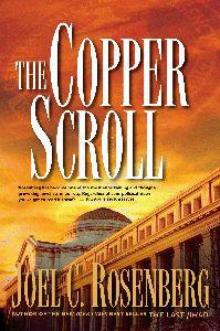 The Copper Scroll
The Copper Scroll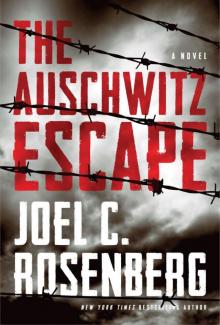 The Auschwitz Escape
The Auschwitz Escape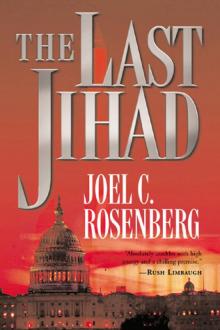 The Last Jihad
The Last Jihad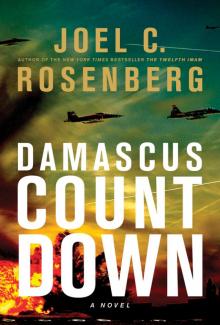 Damascus Countdown
Damascus Countdown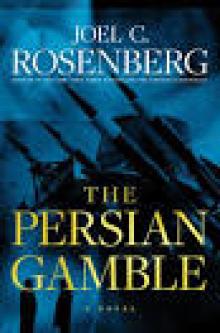 The Persian Gamble
The Persian Gamble The Jerusalem Assassin
The Jerusalem Assassin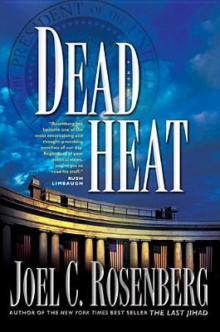 Dead Heat
Dead Heat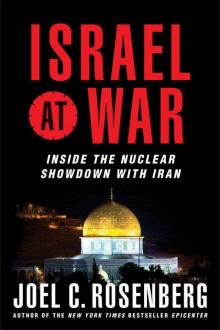 Israel at War: Inside the Nuclear Showdown With Iran
Israel at War: Inside the Nuclear Showdown With Iran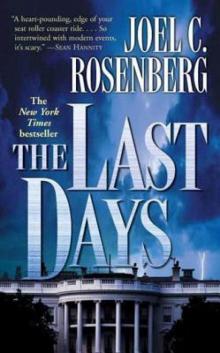 The Last Days
The Last Days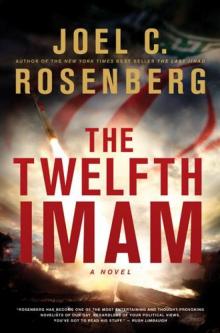 The Twelfth Imam
The Twelfth Imam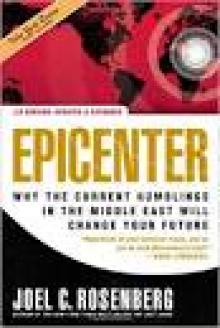 Epicenter 2.0
Epicenter 2.0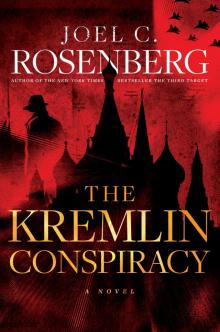 The Kremlin Conspiracy
The Kremlin Conspiracy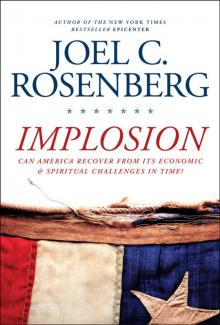 Implosion: Can America Recover From Its Economic and Spiritual Challenges in Time?
Implosion: Can America Recover From Its Economic and Spiritual Challenges in Time?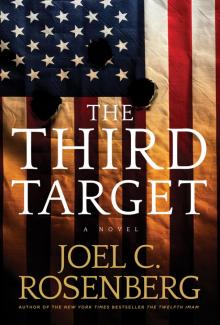 The Third Target: A J. B. Collins Novel
The Third Target: A J. B. Collins Novel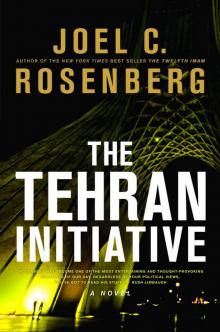 The Tehran Initiative
The Tehran Initiative Inside the Revolution
Inside the Revolution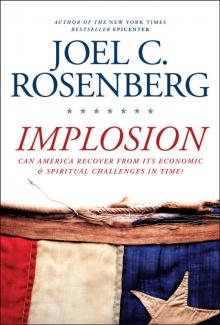 Implosion
Implosion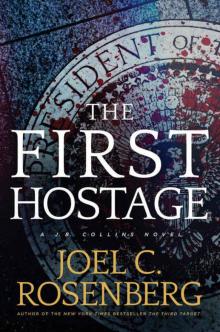 The First Hostage: A J. B. Collins Novel
The First Hostage: A J. B. Collins Novel